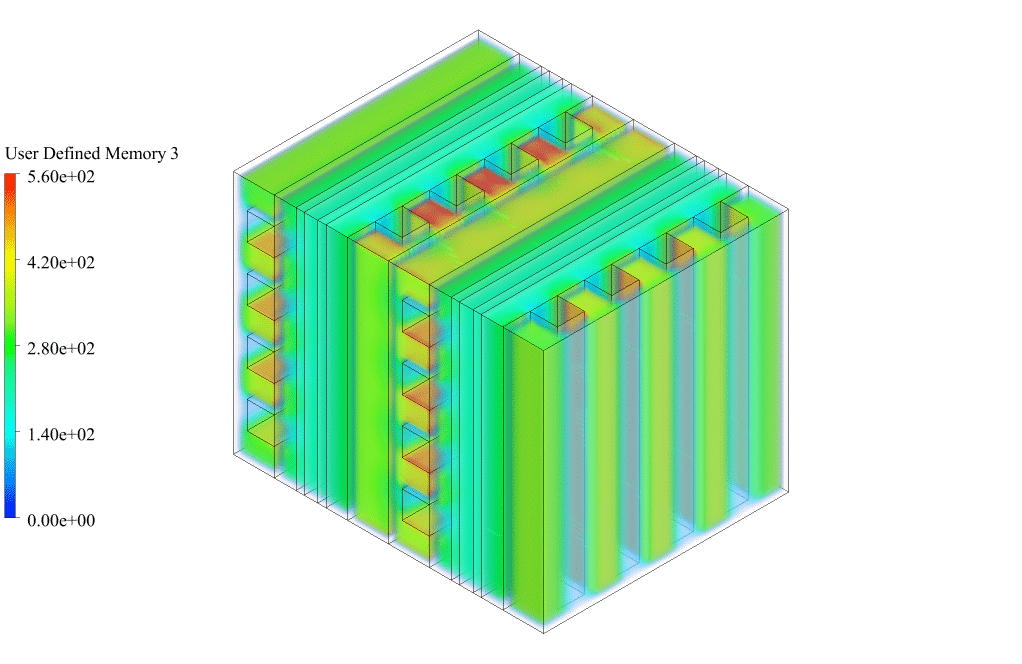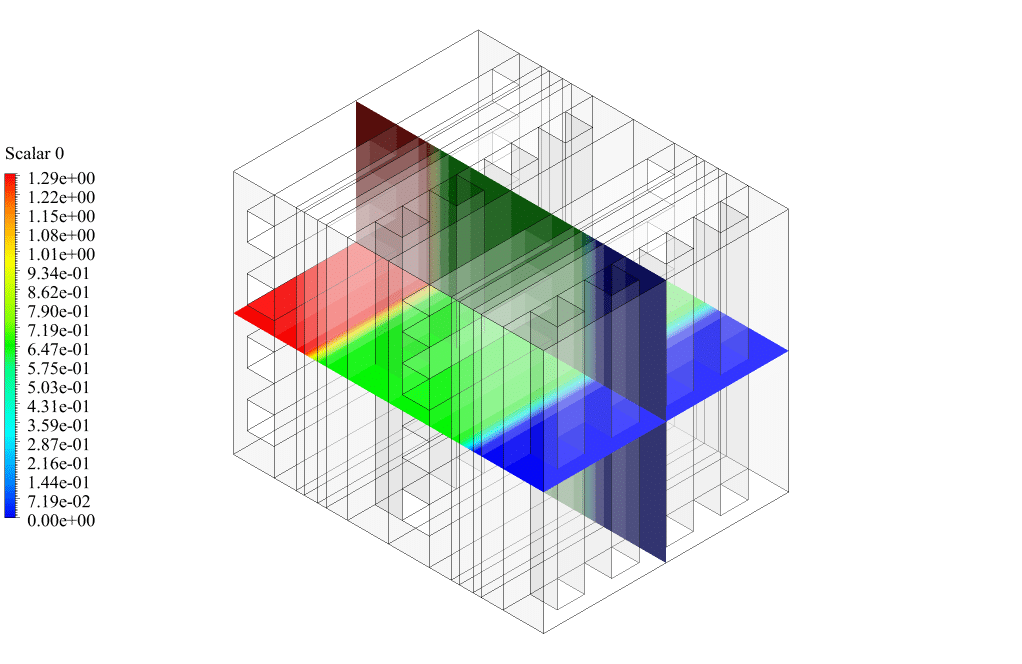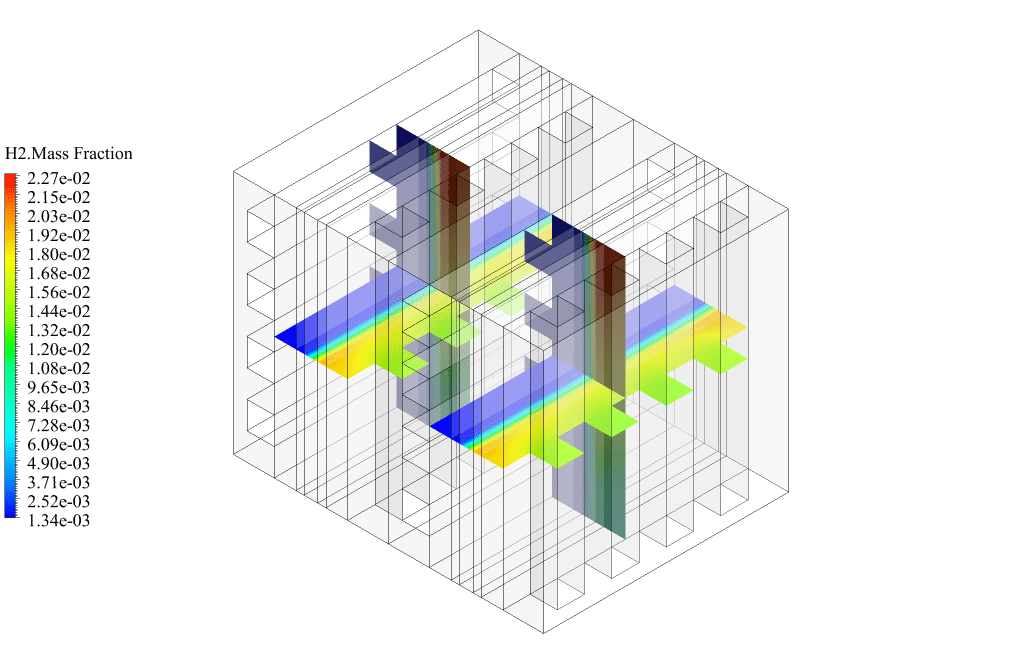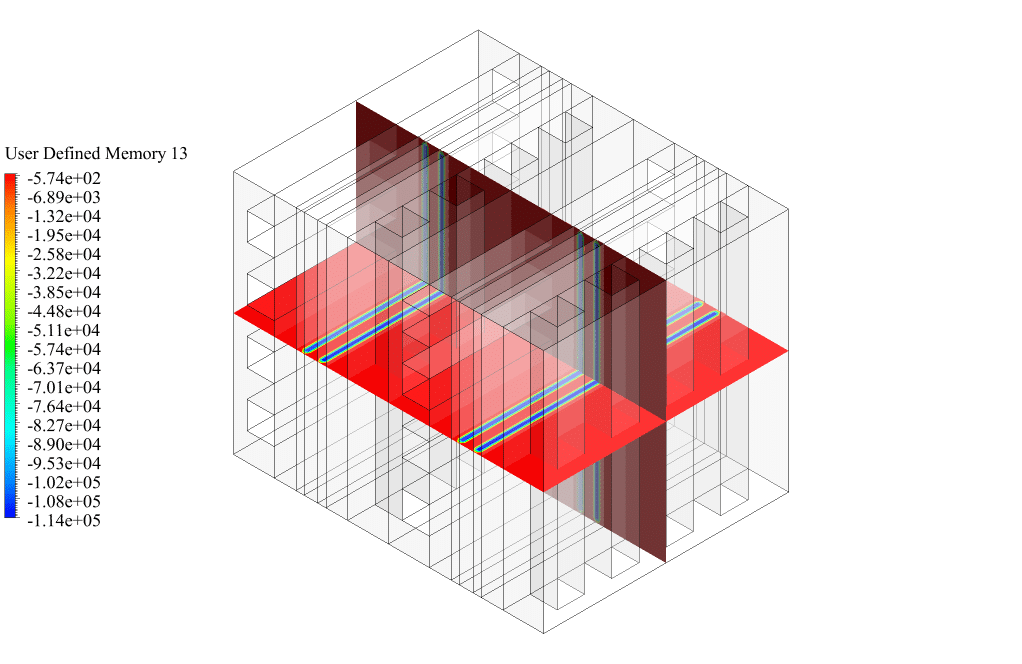Electrolysis Stack, CFD Simulation, ANSYS Fluent
$270.00 $135.00 Student Discount
- The problem numerically simulates the Electrolysis Stack using ANSYS Fluent software.
- We design the 3-D model with the Design Modeler software.
- We mesh the model with ANSYS Meshing software.
- The mesh is Structured, and the element number equals 279,868.
- We used the Fuel Cell and Electrolysis model and Electrolysis sub-model to define the electrolysis process.
- We used the Species model to define H2, O2, and H2O.
To Order Your Project or benefit from a CFD consultation, contact our experts via email (info@mr-cfd.com), online support tab, or WhatsApp at +44 7443 197273.
There are some Free Products to check our service quality.
If you want the training video in another language instead of English, ask it via info@mr-cfd.com after you buy the product.
Description
Description
In this project, we perform the numerical simulation of an Electrolysis Stack using ANSYS Fluent software.
This product is the fifth chapter of the Electrolysis Training Course.
Note that a Fuel Cell is an energy conversion device that converts the chemical energy of fuel into electrical energy. Electrolysis is the reverse of a fuel cell. It means power (electricity) is consumed to produce fuel (hydrogen).
Similar to fuel cells, electrolyzers consist of two main sides called anode and cathode, which are connected by an electrolyte membrane layer. On each side of the anode or cathode, there is a current collector, a gas diffusion layer (porous electrode), a catalyst layer, and a flow channel.
Electrochemical reactions take place in catalyst layers. As a result of these reactions, water (vapor) is consumed and oxygen and hydrogen are produced.
In this CFD Simulation, we investigate an electrolysis stack instead of the individual electrolysis. In other words, we define an electrolyzer stack with a combination of electrolyzer units.
We performed the simulation process in ANSYS Fluent software.
First, we modeled the geometry in 3D using Design Modeler software. The computational domain is related to the interior space of an electrolyzer.
Then, we meshed the model using ANYS Meshing software. The meshing is structured, and 279,868 cells are generated.
Electrolysis Methodology
We simulated this project based on the CFD method by ANSYS Fluent software.
In this CFD simulation, we used the fuel cell and electrolysis model and electrolysis sub-model to define the electrolysis process. Note that the fuel cell and electrolysis model is an add-on module in Ansys Fluent software.
In the electrolysis model setting, we determine the different layers of the electrolyzer. The electrolyzer consists of the cathode, anode, and electrolyte layers. Each of the anode and cathode sides consists of current collectors, gas diffusion layers (porous electrode layers), catalyst layers, and gas flow channels.
In this project, we need to use the stack management option to define a combination of electrolyzer units.
Since we used the electrolysis model, the species model is automatically activated. Therefore, we used the species transport model to define the species present in the electrochemical reactions, including H2, O2, and H2O.
Electrolysis Conclusion
After conclusion, we have obtained the contours related to electric potential, protonic potential, current flux density magnitude, transfer current, and mass fraction of H2, O2, and H2O.
The H2, O2, and H2O mass fraction contours show that water (vapor) enters from the anode side, hydrogen is produced on the anode side, and oxygen is produced on the cathode side.
This behavior is exactly according to the operating mechanism of the electrolysis system. Therefore, we conclude that we performed the electrolyzer simulation correctly.
When we use the fuel cell and electrolysis model, some user-defined scalars (UDS) are enabled. Here, we obtained the contours of electric potential (scalar 0), and protonic potential (scalar 1). These contours show that the potential equations of the electrolysis model are solved correctly. Hence, the effect of electrons and protons in electrolyzer layers is understandable.
Also, when we use the fuel cell and electrolysis model, several user-defined memories (UDM) are enabled. Here, we obtained contours of current flux density magnitude (user-defined memory 3) and transfer current (user-defined memory 13). These contours show that there is an electric current in the electrolyzer.




















Reviews
There are no reviews yet.